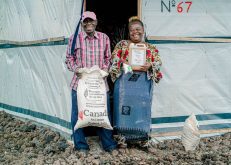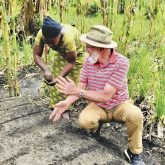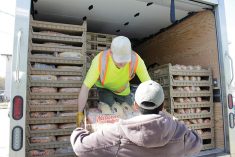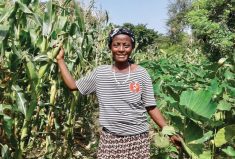A Canadian Foodgrains Bank representative says the “loss and damage” fund countries agreed to during COP27 is a good step but there’s concern that countries will simply divert existing adaptation funding.
Naomi Johnson is a senior policy advisor with the foodgrains bank. She attended COP27, a congress of the United Nations Framework Convention on Climate Change, as an observer. The conference ran from Nov. 6-20 in Sharm el-Sheikh, Egypt.
After two weeks of negotiations, countries agreed to establish a “loss and damage” fund to help vulnerable countries pay for costs related to climate damage, Reuters reported Nov. 20.
Read Also

Boosting productivity could mean historic farm revenues
FCC report finds increasing productivity in the Canadian agriculture sector could mean $30 billion in farm revenue in the next decade
A group of 134 African, Asian and Latin American states, plus small island nations, pushed for the controversial fund, Reuters said. Canada also supported the fund, CBC reported Nov. 18.
While many details remain to be hammered out, there will be funding for loss and damage in vulnerable countries, Johnson said.
However, some countries that committed money were diverting it from other climate-related funds, such as climate adaptation spending, she said. There’s crossover between adaptation and repairing damage, she added, but separate, additional funds are the ideal.
The Foodgrains bank was represented at COP27 to advocate for “increased adaptation support for small-scale farmers,” Johnson said. The bank works with partner groups to help farmers in poorer countries adopt farming practices that can withstand drought and other weather extremes.
[RELATED] Foodgrains bank noted for impact of efforts
“Adaptation is very underfunded … globally and in Canada,” Johnson said, though Canada is doing “OK” on its climate funding commitments.
“We’re seeing a lot of good, promising things.”

Earlier this year Canada added $315 million to its contributions to global climate finance on top of its 2021 $5.3 billion five-year commitment.
Still, Johnson said Canada is doing less than its fair share as committed in the Paris agreement.
Most of Canada’s climate finance is loans, not grants. Though Canada has yet to fulfill its commitments, Johnson said having policy in place for a loss and damage fund is an important step.
“It allows us as civil society or other countries to apply pressure,” she said. The Canadian government is trying to improve its contribution because of that applied pressure, she added.
















